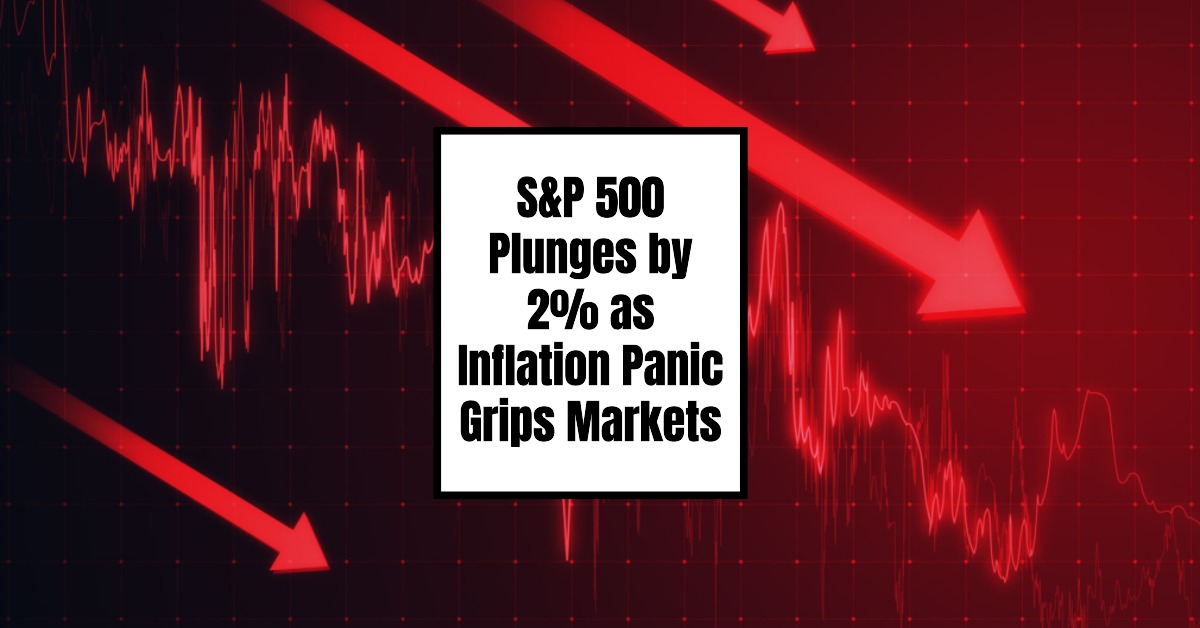W
hen I saw the headlines on March 28th, 2025, my initial reaction was a familiar sense of unease. The phrase "Wall Street Plunges as Inflation Panic Grips Markets" sends shivers down the spine of anyone paying attention to their investments or the broader economy. This time, it wasn't just a phrase - it was reality.
The release of February 2025 economic data painted a picture that investors didn't like. The Personal Consumption Expenditures (PCE) price index and consumer spending figures showed concerns about ongoing inflation and a potentially slowing economy triggered a significant sell-off in the stock market.
Let's break down what caused this ripple of fear. The PCE price index is like the Federal Reserve's favorite thermometer for checking the temperature of inflation. It looks at the prices of all the stuff we buy - from groceries to haircuts - and tracks how those prices are changing. In February 2025, the overall PCE price index rose by 0.3%, putting the year-over-year increase at a concerning 2.5%. The core PCE price index, which strips out volatile food and energy prices, jumped by 0.4% in February, resulting in a year-over-year rate of 2.8%.
Consumer spending is the engine that drives a big chunk of our economy. If we're not buying things, businesses suffer, and the economy can slow down. The February data revealed that consumer spending grew by 0.4%, falling short of the expected 0.5% increase.
The combination of rising prices and hesitant spending brings up the specter of stagflation - a nasty scenario where the economy isn't growing much, but prices keep going up. It's like being stuck in slow motion while everything around you gets more expensive.
The market's reaction on March 28th was dramatic. The S&P 500 plunged by 2%, the NASDAQ took an even bigger hit of 2.7%, and the Dow Jones Industrial Average dropped by 1.7%. These aren't small dips; they represent a significant amount of investor concern hitting the market all at once.
If inflation stays high, the Federal Reserve might feel pressured to keep interest rates higher for longer to try and cool things down. Higher interest rates can make it more expensive for businesses to borrow money for expansion, and it can also make investors less willing to put their money into stocks when safer, higher-yielding options like bonds become more attractive.
Furthermore, if consumer spending is starting to slow, that could mean companies will have a harder time selling their goods and services, which could ultimately hurt their profits. And if profits take a hit, stock prices tend to follow suit.
Another factor has entered the equation: tariffs. Potential tariff hikes could further exacerbate inflation by increasing the cost of imported goods, leading to higher prices for consumers. This could create another layer of upward pressure on inflation, making the Fed's job even harder and potentially leading to more economic uncertainty.
In times like these, it's easy to feel lost in market turbulence. But a level-headed approach is always the best strategy. Here are a few thoughts on what investors might want to keep in mind:
Don't Panic: Selling off your investments in a knee-jerk reaction can often do more harm than good.
Review Your Portfolio: Take a look at your current investments and consider if your portfolio is still aligned with your long-term goals and risk tolerance.
Focus on the Long Term: Investing is often a marathon, not a sprint. Try to keep your focus on your long-term objectives and avoid getting too caught up in short-term market noise.
Consider Diversification: A well-diversified portfolio across different asset classes and sectors can help cushion the impact of market downturns in specific areas.
Stay Informed: Keep an eye on economic data and Federal Reserve announcements, but be wary of sensationalized market movements.
Investors will likely be glued to upcoming economic reports and statements from the Federal Reserve. Key things to watch out for include:
The March Consumer Price Index (CPI): This report will give us another important data point on price pressures.
Federal Reserve Meetings and Communications: Any hints from the Fed about their future plans for interest rates will be closely scrutinized by the market.
Further Data on Consumer Spending and Economic Growth: Reports on retail sales, manufacturing activity, and overall GDP growth will provide more clues about the health of the economy.
The market's current sensitivity highlights just how crucial these upcoming data releases will be in shaping investor sentiment and the overall economic outlook.














